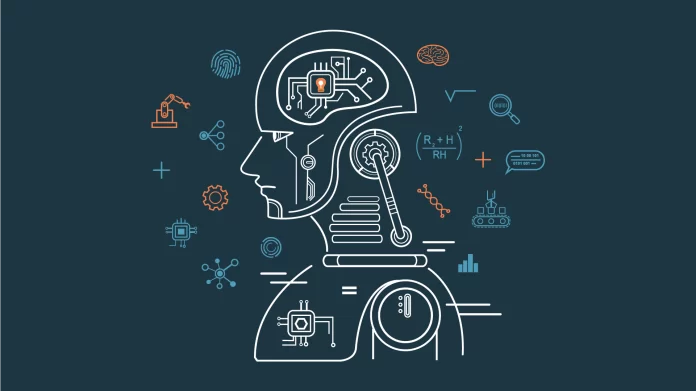Crediting risk assessment using AI and machine learning: Credit availability is a major factor in economic expansion. But even with strong foundations and strict restrictions, the Indian economy has a severe credit gap. The credit-to-Gross Domestic Product (GDP) ratio, which is 50% for India and 177% for China, is an excellent indicator of this difference. Due to high operating expenses and challenging underwriting, the current banking infrastructure does not sufficiently serve micro, small, and medium-sized firms (MSME) and nano-SME borrowers. As a result, the impact of this gap is particularly severe for these borrowers. This represents the greatest potential impact that artificial intelligence (AI) and machine learning (ML) can have on the granting and making of credit.
According to ICRA projections, there was a 16% increase in credit in the financial year (FY) 2024, with small-value unsecured loans driving demand. Although this growth rate is healthy, the Reserve Bank of India, the regulator, tightened lending standards in response to concerns about improper lending practices, including excessive debt and inadequate underwriting. This tightening will probably cause credit growth rates to drop to 11–12% in FY25, which emphasizes how crucial risk management is for small loans—that is, loans with very low costs.
Two factors must be evaluated in order to comprehend and quantify risk, or the creditworthiness of a borrower: ability to repay and willingness to repay.
AI models provide financial organizations with a flexible toolkit for different phases of the client lifecycle. These applications can be generally divided into multiple categories:
- Credit decisioning: Using supervised or unsupervised learning algorithms is part of applying AI/ML techniques to credit decisioning. Using machine learning (ML) to analyze credit bureau information, for example, can provide insights into misreported loans, certain repayment plans like bullet repayments, default patterns across various industries and geographies, and income disparities in states and districts. This kind of analysis helps determine a user’s repayment capacity.
- Fraud and bad actor detection: Possible red flags can be found by closely examining user behavior during loan applications, including interactions with the program, copy-paste habits, frequency of data corrections, and changes in connectivity. Regarding KYC, evaluating the consistency of user data from many sources aids in identifying dishonest borrowers and determining their repayment propensity.
- Early warning signs: Financial institutions need to keep a careful eye on repayment patterns after loans are disbursed. By scrutinising bureau data and utilising machine learning techniques, risks can be identified and preemptive measures can be taken to ensure successful collections.
- Operational efficiency: By learning and automating tasks normally completed by operations people, intelligent systems can improve operational workflows. Applying machine learning (ML) approaches minimizes mistake rates from manual interventions and drastically cuts down on turnaround time (TAT).
- Enhancement of collection efficiency: Effective collections are crucial for a lending institution. AI models provide proactive issue resolution in collections by recognizing payback trends, preferred means of repayment, and user interactions with communications.
Choosing the right AI/ML algorithm depends on the type of business and the caliber of the data gathered. Unsupervised learning provides insightful information for organizations handling unstructured data. In this case, clustering or association algorithms are good options for model generation. On the other hand, supervised learning—which makes use of user data—is better suited for well-established financial organizations. In these kinds of models, the two main types of algorithms that are used are regression and classification.
In the upcoming years, two credit subsectors are probably going to see a major uptake of AI-related technology. First, women are already more likely than men to apply for credit, particularly for small company loans. When applying, women borrowers usually have less standard underwriting data available, but they do have more than enough alternative data, such as saves and spends, group savings, etc. Custom AI/ML technologies have the potential to improve alternative data-based underwriting in addition to uncovering and eliminating common gender biases in underwriting.
The second subsector consists of borrowers in rural and semi-urban areas, where risk assessment frequently requires gathering information on factors other than the specific borrower, like seasonality of inflows and household income dynamics. This is another perfect scenario for AI-based models to be trained on and used in.
All things considered, the ability of AI/ML tools to change the way and to whom credit is given is particularly pertinent and significant for India’s success narrative.



































